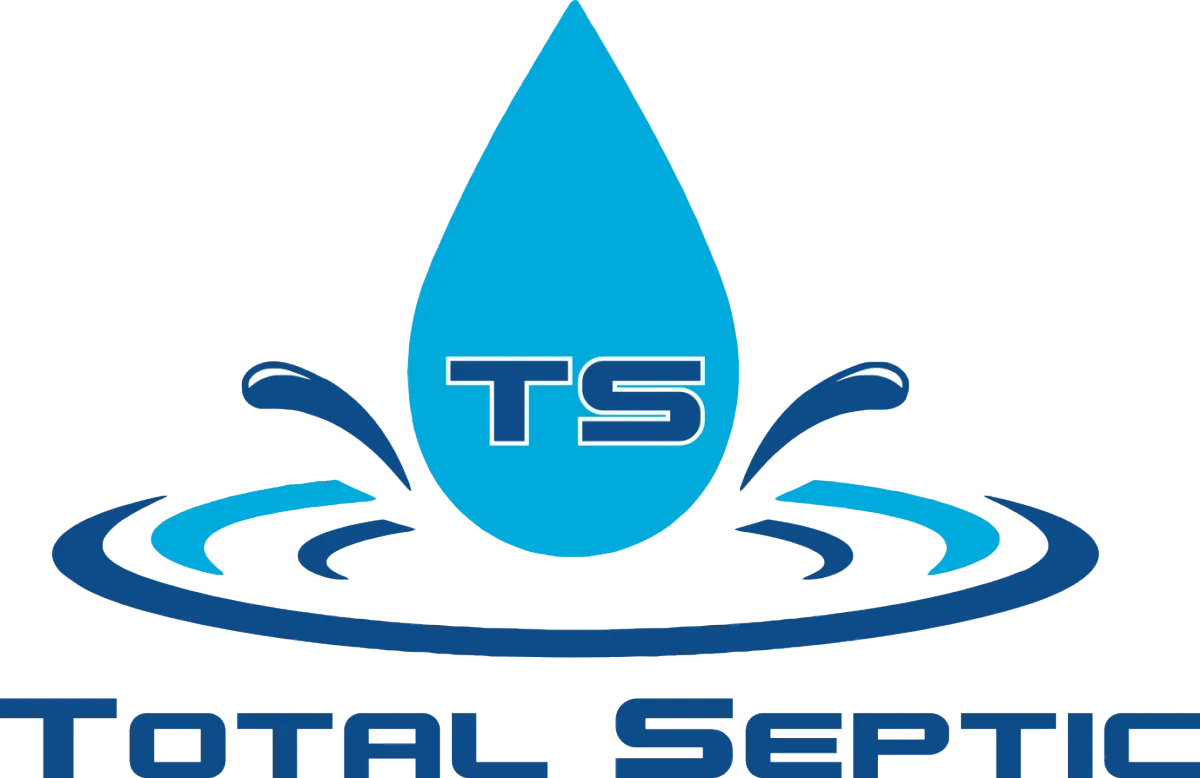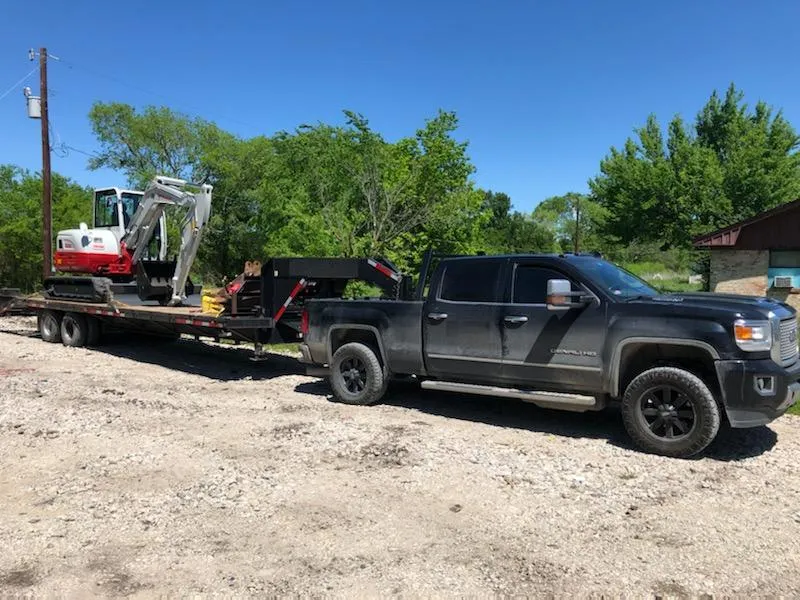
Serving Texas Counties: Collin, Grayson, Dallas, Denton, Rockwall, Fannin and Hunt
Septic Installation near Anna in Collin County, TX
Total Septic is Committed to superior quality and results!

AVOID COSTLY MISTAKES:
Do NOT hire an excavating contractor without first reading our free guide:
The ULTIMATE Excavation & Septic "Success Guide."

Septic Installation near Anna in Collin County, Texas: start with clarity
If you live outside city sewer service in or around Anna, your home relies on a septic system to safely handle wastewater from sinks, showers, laundry, and toilets. When you’re building, adding bedrooms, or your current system is failing, a proper installation isn’t just a box to check—it’s a health, safety, and property-value decision. Homeowners in Collin County want plain talk: What does a septic installation involve in TX soils and weather? How long does it take? What tends to drive cost up or down? And most importantly, how do you avoid the headaches—backups, soggy yards, fines, and surprise change orders? This page lays out what to expect, why the details matter, and how to hire confidently.
How Can We Help?


What a septic installation near Anna in Collin County actually includes
A real installation is far more than “put a tank in the ground.” It begins with a site evaluation and soil analysis to understand percolation and seasonal moisture. That information drives the system design in TX: tank size, field layout, treatment type, elevations, and protective setbacks from wells, property lines, streams, and structures. Next comes permitting and utility locates, then a construction plan that sequences excavation, tank placement, distribution, piping, and the absorption area. Crews grade the site to shed stormwater away from the field, install risers and effluent filters for future service, and prepare for inspections. After approvals, the system is backfilled, compacted appropriately, and the yard is restored. Good installers document as-builts so you know exact component locations for future maintenance.
The benefits of a properly designed system
When design and installation are aligned with your soil and household usage, you get fewer odors, fewer backups, and consistent performance through both dry summers and heavy rain. Protection of groundwater and nearby wells improves, and your drain field lasts longer because water is distributed evenly and never overloaded. A well-planned layout preserves usable yard space and avoids conflicts with driveways, patios, trees, and future projects. Quality components, set on correct elevations and slopes, reduce energy use, extend service life, and make routine maintenance faster and cheaper. When it’s time to sell, permitted plans, inspection records, and clear documentation in Collin County calm buyers and lenders—often speeding up closing.
The benefits of hiring for Septic Installation near Anna in Collin County, Texas
Could you try to coordinate soil testing, design, permits, excavation, safety, inspections, and restoration yourself? Maybe. Will it be faster, safer, and more reliable with experienced local help? Absolutely. Local pros understand TX code, Collin County requirements, seasonal groundwater patterns, and the realities of working in clay layers, sand seams, and rocky pockets. They know how to stage equipment to minimize lawn damage, trench safely, protect trees, and finish with clean grading that keeps runoff off the field. They anticipate cross-connection risks, set proper pipe slopes, and ensure tanks, pumps, and alarms are accessible and serviceable. Most importantly, they keep you ahead of inspections and paperwork so your project moves without unnecessary delays.
The process for hiring a septic installation near Anna in Collin County
Start with your needs: bedroom count, current and future occupancy, possible additions, and any outbuildings or a pool you might want later. Gather a survey if you have one. Then schedule a site visit with a licensed installer who regularly works in Collin County. During that visit, expect discussion of soil testing, tank sizes, field options, elevations, access for equipment, and realistic timelines. Ask for a written scope that breaks the job into phases: evaluation, design, permitting, excavation, installation, inspection, backfill, grading, and restoration. The proposal should list specific components, warranties, inclusions, and exclusions (like irrigation repairs, rock hammering, or importing select fill). Confirm safety protocols, daily cleanup expectations, and how weather delays are handled. Before you sign, verify license and insurance, and ask how they communicate schedule changes and inspection results. Clear scope and communication up front prevent most “surprises” later.
See Our Excavation & Septic Services

✔️ Commercial Excavation
✔️ Residential Excavation
✔️ Demolition
✔️ Dozer work
✔️ Septic inspections
✔️ Septic system pumping
✔️ Septic installs traditional systems
✔️ Septic tanks - aerobic systems
✔️ Septic tanks - Plastic/poly
Quality Services Launched FAST!

✔️ Septic tanks - Concrete
✔️ Sewer repairs
✔️ Trenching
✔️ Utilities Trenching
✔️ Pump Outs Installs
✔️ Maintenance Contracts
What Are You Waiting For?
Common TX system options and how they fit your property
Where soils perk well and space allows, conventional gravity systems remain a solid, low-maintenance choice. On tighter lots or slower soils, low-pressure dosing or chamber systems improve distribution across the field. Where a site or regulation requires it, aerobic treatment units add oxygen to speed breakdown, producing cleaner effluent that can work with smaller dispersal areas. Drip dispersal can fit irregular sites and slopes when designed with proper filtration and dosing controls. Helpful add-ons include risers for easy access, effluent filters to protect the field, high-water alarms, and smart timers for dosing. The right choice balances soil conditions, elevation, yard use, energy needs, maintenance access, and your long-term plans.
Timeline and what to expect during the work
Many projects run two to six weeks from kickoff to final inspection, with the exact timeline driven by permitting, weather, and system complexity. Expect staking of the layout, careful equipment access planning, and protection for nearby features like trees and hardscape. Excavation will create temporary soil piles and a noticeable—but temporary—disturbance. A conscientious crew keeps paths tidy, fences or covers open excavations when needed, and schedules inspections to minimize idle time. After approvals, backfilling and compaction happen quickly, followed by grading to shed water away from the field. Restoration may include seed and straw or a plan for later landscaping. You’ll finish with a walkthrough, maintenance instructions, and documents for your records.
Cost drivers you can plan for up front
Price elements include system type, tank size, excavation depth, rock conditions, pump requirements, control panels, and restoration scope. Design, engineering, and permits are meaningful line items in TX. Access matters: tight gates, long hauls, retaining walls, and steep slopes add labor. Unforeseen conditions—like shallow bedrock or unsuitable fill—can require rock breaking, importing select material, or adjusting the layout. Good proposals spell out unit prices for contingencies and clearly define what is and isn’t included, so you never feel ambushed. Also budget for routine service: pump-outs, filter cleaning, and any aerobic maintenance help protect the bigger investment you just made.
Care tips after your new installation
Simple habits preserve system life. Spread laundry across the week to avoid hydraulic surges. Keep vehicles, trailers, and heavy equipment off the field to prevent compaction. Use gutters and swales to divert roof water away from the area. Choose septic-safe paper and cleaners, and never flush wipes or pour grease down the drain. Keep landscaping shallow over the field and avoid deep-rooted trees that will chase moisture. Mark tank, cleanout, and field locations on a simple map and store it with your records. Schedule routine pump-outs based on household size and follow any service plan your system requires. A little attention prevents most emergencies.
Your next step
If you’re weighing options, begin with a site conversation and soil review. With the right evaluation, a clear scope, and transparent pricing, septic installation near Anna in Collin County, TX, becomes a straightforward upgrade that protects your property, your family, and the local environment—today and for decades to come.
Facebook
Google Plus